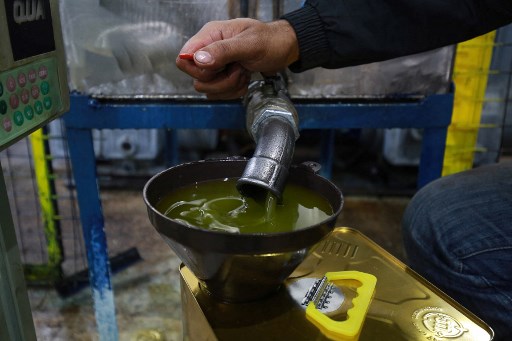
403
Sorry!!
Error! We're sorry, but the page you were
looking for doesn't exist.
Olive harvest season kicks off
(MENAFN) As the olive harvest season kicked off, Mahmoud Nader called on his three sons—two in university and one employed in a shop—to divide their time between studies and helping him gather olives. The family earns wages based on the amount of olives they pick, which help cover some of their educational expenses.
Mahmoud shared that he has been working in the olive harvest for several years, benefiting from both temporary income during the season and essential products like olive oil, olives, and soap. The olive harvest season in Jordan typically runs from early October to December, with the Ministry of Agriculture estimating that this year’s production will reach 175,000 tons. Of this, 143,000 tons will be pressed for olive oil, producing around 26,000 tons of oil, with domestic demand expected to be around 25,000 tons.
Mahmoud's situation reflects the reality for many families across Jordan, who rely on the seasonal work provided by olive harvesting. This seasonal labor is part of the informal economy, which, according to a 2021 study by the Jordan Strategy Forum, contributes about 15% of the country’s GDP.
Olive farm owner Khaled Hussein pointed out that he hires young workers every year to assist with harvesting, collecting, and transporting olives to the presses for a set fee. Additionally, he employs workers to make products like soap and peat, which are sold as heating fuel or used for other purposes.
Economist Hossam Ayesh referred to the olive harvest as a "positive shadow economy" that creates short-term income opportunities for many Jordanians. It also helps farmers meet their financial obligations before they can sell their crops.
Political economist Zayan Zwaneh highlighted the broader economic benefits of the season, noting that it provides jobs in sectors like transportation, preservation, and production (including tin and plastic factories). Beyond economics, the olive harvest has cultural significance, as many children take time off school to help with the harvest.
According to the latest statistics from the Department of Statistics, there are 146 olive presses in Jordan, and the total area planted with olive trees reached 578,400 dunums in 2023. Irbid ranks first with 164,500 dunums dedicated to olive cultivation.
Mahmoud shared that he has been working in the olive harvest for several years, benefiting from both temporary income during the season and essential products like olive oil, olives, and soap. The olive harvest season in Jordan typically runs from early October to December, with the Ministry of Agriculture estimating that this year’s production will reach 175,000 tons. Of this, 143,000 tons will be pressed for olive oil, producing around 26,000 tons of oil, with domestic demand expected to be around 25,000 tons.
Mahmoud's situation reflects the reality for many families across Jordan, who rely on the seasonal work provided by olive harvesting. This seasonal labor is part of the informal economy, which, according to a 2021 study by the Jordan Strategy Forum, contributes about 15% of the country’s GDP.
Olive farm owner Khaled Hussein pointed out that he hires young workers every year to assist with harvesting, collecting, and transporting olives to the presses for a set fee. Additionally, he employs workers to make products like soap and peat, which are sold as heating fuel or used for other purposes.
Economist Hossam Ayesh referred to the olive harvest as a "positive shadow economy" that creates short-term income opportunities for many Jordanians. It also helps farmers meet their financial obligations before they can sell their crops.
Political economist Zayan Zwaneh highlighted the broader economic benefits of the season, noting that it provides jobs in sectors like transportation, preservation, and production (including tin and plastic factories). Beyond economics, the olive harvest has cultural significance, as many children take time off school to help with the harvest.
According to the latest statistics from the Department of Statistics, there are 146 olive presses in Jordan, and the total area planted with olive trees reached 578,400 dunums in 2023. Irbid ranks first with 164,500 dunums dedicated to olive cultivation.

Legal Disclaimer:
MENAFN provides the information “as is” without warranty of any kind. We do not accept any responsibility or liability for the accuracy, content, images, videos, licenses, completeness, legality, or reliability of the information contained in this article. If you have any complaints or copyright issues related to this article, kindly contact the provider above.






















Comments
No comment